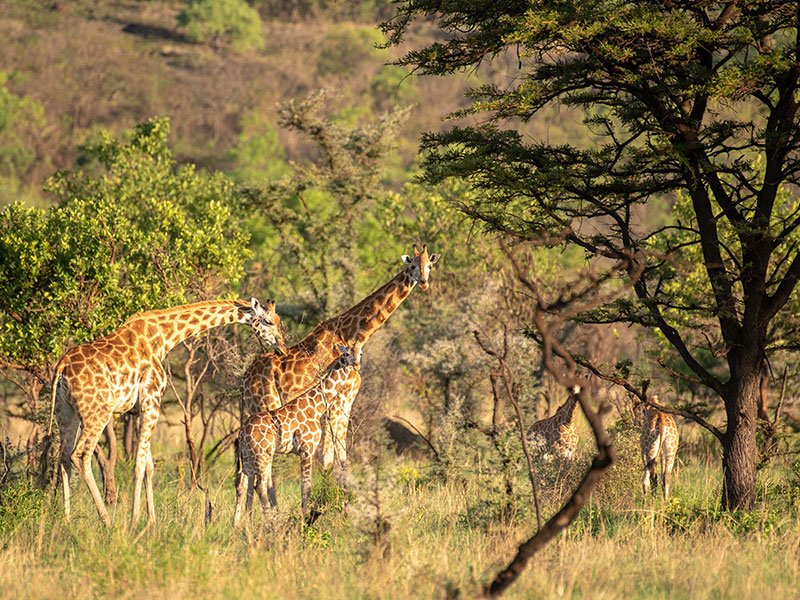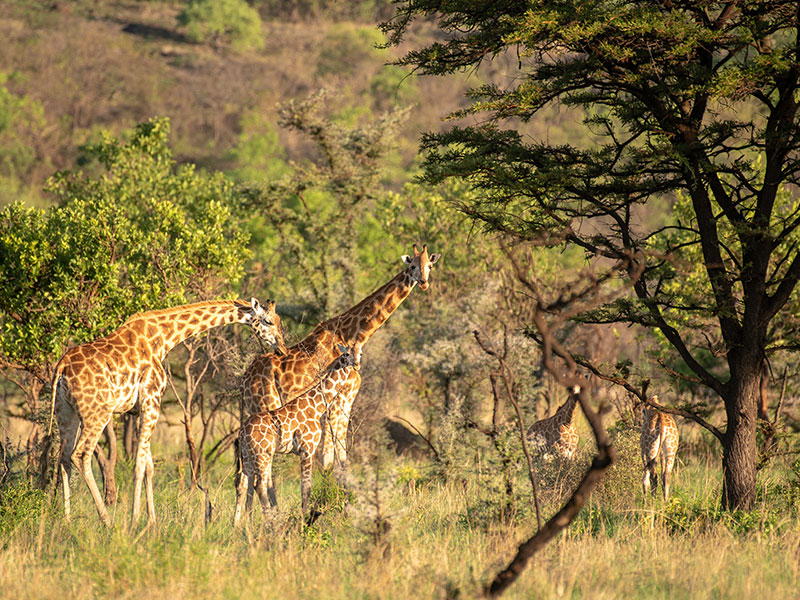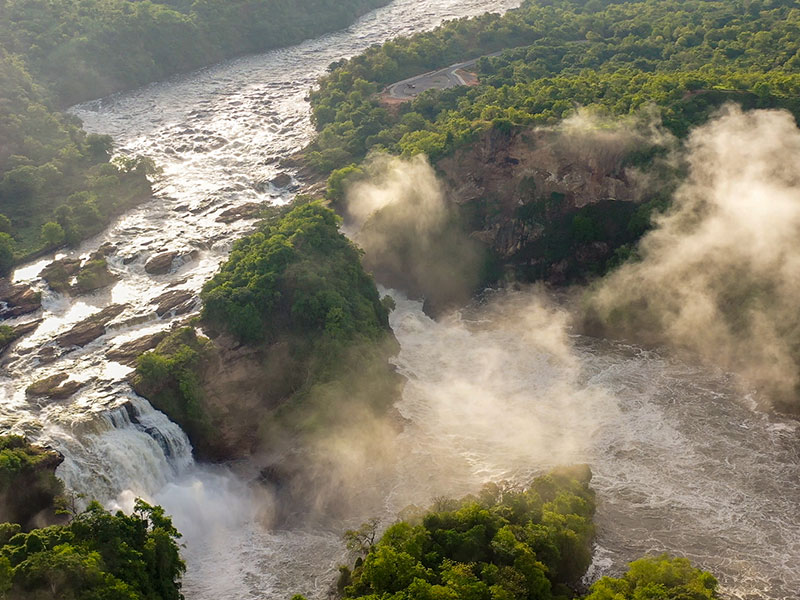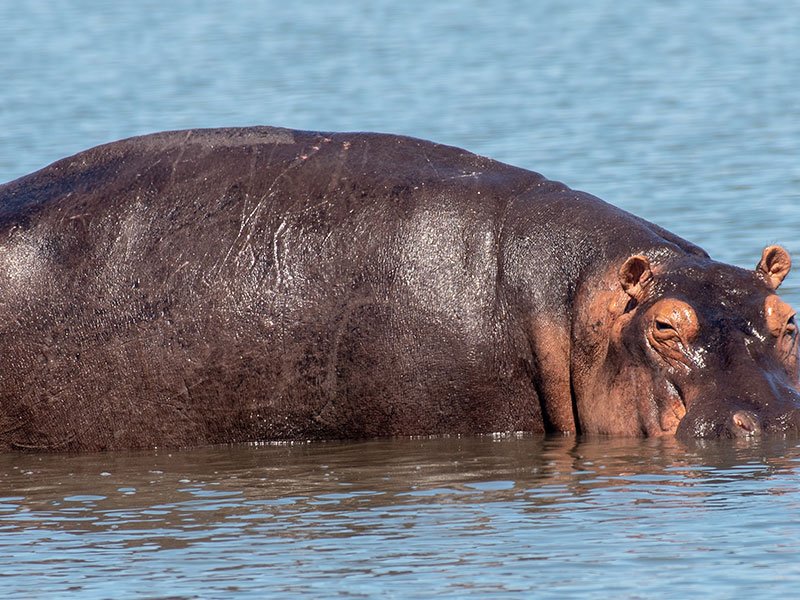
Lake Mburo National Park, located in the Kiruhura District in Western Uganda, is one of the smallest national parks in Uganda, covering approximately 260 square kilometers. Despite its size, the park is rich in biodiversity, boasting a variety of landscapes, wildlife, and cultural heritage. Established in 1983, it holds a unique place in Uganda’s conservation history, not only for its natural beauty but also for the complex relationships between local communities and the government.
The area around Lake Mburo was historically inhabited by the Banyankole people, one of Uganda’s major ethnic groups. The Banyankole are primarily pastoralists, and the land around the lake was used for cattle grazing for centuries before the establishment of the park. Cattle rearing remains an important aspect of Banyankole culture. Also the vast savannah grasslands provided the perfect environment for this practice.
Background
According to local legends, the name “Mburo” is derived from two brothers, Kigarama and Mburo, who lived in the area. Kigarama had a dream warning them to move from the lowlands near the lake to the hills. While Kigarama heeded the dream and moved, Mburo ignored it and remained by the lake. A flood eventually covered the area, killing Mburo. The lake was subsequently named in his memory.
During the colonial period, much of Uganda’s land, including the area surrounding Lake Mburo, was subject to significant land use changes. The British colonial administration encouraged large-scale ranching and agricultural development, which disrupted traditional land use patterns. The Banyankole, who had been using the land for communal grazing, saw increasing competition from settlers and ranchers who were granted land by the colonial authorities.
In the mid-20th century, ranches began to dominate the landscape. As aresult, much of the wildlife was driven out or significantly reduced as a result of habitat loss and hunting. However, the lake and its surrounding area remained a significant wildlife corridor. Home to species such as zebras, impalas, and buffaloes, which continued to roam the grasslands.
After Independence
After Uganda gained independence in 1962, the government began to take steps to conserve the country’s natural heritage. Wildlife populations, including those around Lake Mburo, were declining due to poaching and habitat destruction. In 1933, Uganda had passed its first Game Ordinance. It aimed to regulate hunting and protect wildlife. However, enforcement was weak, and conservation efforts were largely limited to larger national parks like Murchison Falls and Queen Elizabeth.
In 1983, the Ugandan government officially designated Lake Mburo and its surrounding areas as a national park. This was to protect the remaining wildlife and habitats. This decision, however, was met with resistance from local communities. Particularly, the Banyankole pastoralists, who had long used the land for grazing. The creation of the park led to tensions between the government and the local people. This was since many were evicted from the land without compensation.
Establishment of Lake Mburo National Park
The establishment of Lake Mburo National Park was not smooth. In the years following its designation, the park faced significant challenges due to the resistance from local communities. Many pastoralists, who had been forced off their land, re-entered the park and continued to graze their cattle, leading to conflicts between park authorities and locals. These conflicts escalated during the late 1980s and early 1990s, when civil unrest in Uganda made it difficult for the government to enforce park boundaries.
During this period, much of the wildlife in the park was poached, and the park’s infrastructure deteriorated. In the early 1990s, the government, with the support of international conservation organizations, began to work towards resolving these conflicts through community-based conservation initiatives. One key initiative was the establishment of buffer zones around the park, where controlled grazing was allowed, giving local people some access to the resources they had traditionally used.
Revenue sharing
In addition, the Uganda Wildlife Authority (UWA) introduced revenue-sharing programs, where a portion of the park’s tourism income was invested in local communities. These efforts helped to reduce tensions and foster a more positive relationship between the park and the surrounding communities.
Lake Mburo National Park is characterized by its diverse landscapes, which include savannah, acacia woodland, swamps, and open water. Lake Mburo itself is the largest of five lakes within the park, and the park is part of a larger wetland system that extends beyond its boundaries.
The park’s ecosystem is unique because it represents the transition between the savannah and forest biomes. This variety of habitats supports a wide range of wildlife species, some of which are not found in other Ugandan parks. The open water and wetlands provide crucial habitats for hippos, crocodiles, and a wide array of bird species, while the savannah supports populations of herbivores and their predators.
Wildlife in Lake Mburo National Park
Despite its relatively small size, Lake Mburo National Park is home to an impressive diversity of wildlife. The park is perhaps best known for its populations of zebra and impala, which are more common here than in other Ugandan parks.
Zebras: Lake Mburo is one of the best places in Uganda to see zebras. These striking animals are often seen grazing in the open savannahs of the park. The zebra population in Lake Mburo is stable and serves as a key attraction for tourists.
Impala: The park is home to Uganda’s only population of impalas. This antelope species is not found in other national parks in the country. Therefore making it a unique feature of Lake Mburo.
Buffaloes and Antelopes: In addition to zebras and impalas, Lake Mburo National Park is home to buffaloes, waterbucks, elands (the largest antelope species), and topis. These herbivores thrive in the savannah and woodland areas of the park.
Leopards and Hyenas: Although they are more elusive, predators such as leopards and spotted hyenas are present in the park. These carnivores prey on the herbivore populations, maintaining the balance of the ecosystem.
Hippos and Crocodiles: The park’s lakes and wetlands provide habitats for large populations of hippos and crocodiles. These aquatic species are most easily observed in and around Lake Mburo itself.
Birdlife: Lake Mburo National Park is a birdwatcher’s paradise, with over 300 species recorded. The park’s diverse habitats, including wetlands, woodlands, and open water, support a wide variety of birdlife, including fish eagles, African finfoots, papyrus gonoleks, and saddle-billed storks.
Activities in Lake Mburo National Park
Tourism in Lake Mburo National Park is centered around its wildlife and scenic landscapes. The park offers a range of activities for visitors to enjoy, each providing a unique perspective on the park’s natural beauty and biodiversity.
Game Drives
Game drives are one of the most popular activities in Lake Mburo National Park. Visitors can explore the park’s savannah and woodland areas in 4×4 vehicles, accompanied by experienced guides who help spot wildlife. The best times for game drives are early in the morning and late in the afternoon when animals are most active. Zebras, impalas, buffaloes, and warthogs are commonly seen during these drives, along with occasional sightings of leopards and hyenas.
Boat Safaris
Lake Mburo itself is the focal point of boat safaris, offering visitors the chance to observe wildlife from the water. Hippos, crocodiles, and a variety of water birds can be seen up close during boat trips on the lake. The boat safaris also offer a peaceful way to take in the park’s stunning scenery, with the surrounding hills and forests reflected in the calm waters.
Walking Safaris
Lake Mburo National Park is one of the few parks in Uganda where walking safaris are allowed. Accompanied by an armed ranger, visitors can explore the park on foot, gaining a more intimate experience of the landscape and its wildlife. Walking safaris offer a chance to see animals at close range without the barrier of a vehicle, and to observe smaller details such as tracks, plants, and insects that are often missed during game drives.
Horseback Safaris
Another unique activity offered in Lake Mburo National Park is horseback safaris. These safaris, operated by Mihingo Lodge, allow visitors to explore the park’s savannah and woodland areas on horseback. Riding through the park offers a quiet and non-intrusive way to observe wildlife, and zebras, impalas, and buffaloes are often seen during these excursions.
Bird Watching
Birdwatching is a major attraction in Lake Mburo National Park, which boasts over 300 species of birds. The park’s varied habitats support a rich diversity of birdlife, and birdwatchers can expect to see species such as the African fish eagle, shoebill stork, crested crane (Uganda’s national bird), and white-winged warbler. The Rubanga Forest, located in the western part of the park, is a particularly good spot for birdwatching.
Community Visits and Cultural Experiences
In recent years, Lake Mburo National Park has developed several community-based tourism initiatives. This allowing visitors to interact with the local Banyankole people and learn about their culture. These cultural experiences often include visits to traditional homesteads. Here visitors can see how the Banyankole live, and demonstrations of traditional practices such as cattle herding and milk processing.
Community visits also provide an opportunity for visitors to learn about the history of the park and the ongoing conservation efforts.












1 Comment
Kavuma Seraphine
September 17, 2024 at 5:51 pmWow. Lake Mburo National Park should be on my bucket list this coming season….. Can’t wait to book my trip with AfriGaze Uganda Safariz.